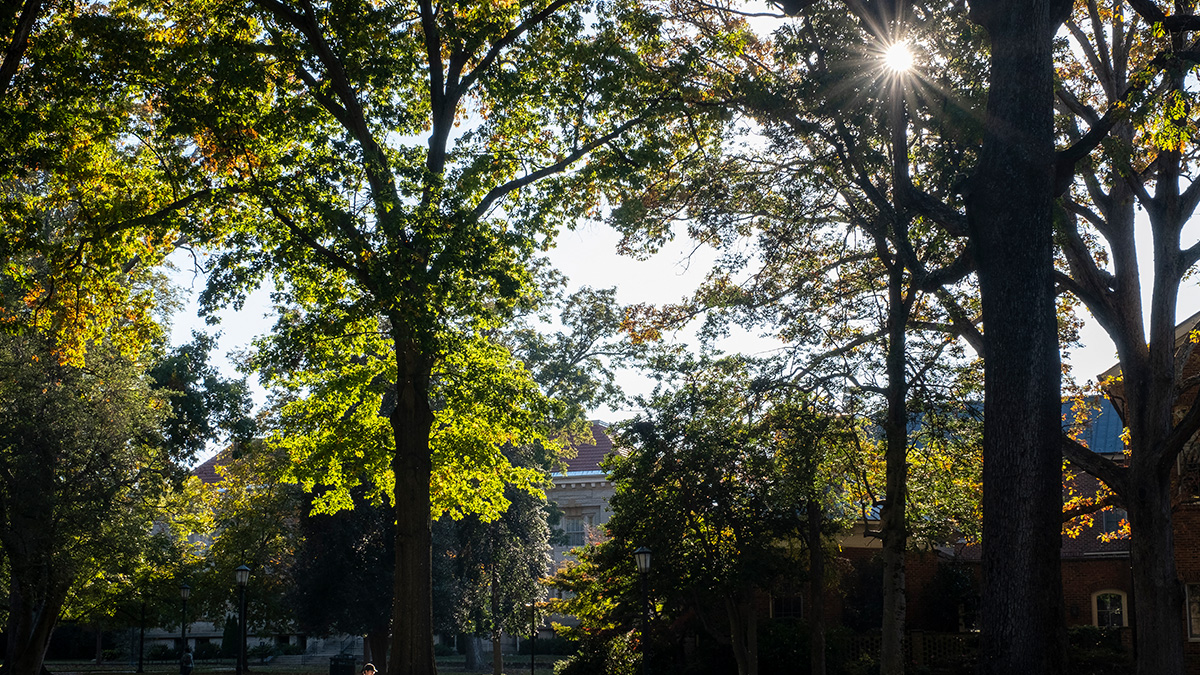Putting the ‘you’ in ‘thank you’
Some researchers believe gratitude is a fundamental human emotion, connecting us to friends and partners who support our well-being. Two Carolina psychologists focus on the long-lasting effects of living a life full of thanks.
Charles Darwin may be best known for his theory of survival of the fittest — the most adaptable organisms are the most likely to survive and thrive. Less well known but perhaps just as important is his view on human relationships. “A man’s friendships are one of the best measures of his worth,” he once said. UNC-Chapel Hill psychologist Sara Algoe, who studies gratitude and its effect on our relationships, couldn’t agree more.
“Gratitude may actually alert us to people in our environment who are looking out for our best interests,” she points out. “And that’s really central to survival, to the human species. We need to be able to find people who have our backs.”
But how do we learn gratitude skills? That’s what Carolina clinical psychologist Andrea Hussong hopes to uncover. She has spent the past three years focused on Raising Grateful Children, a project of the Center for Developmental Science, an inter-institutional organization hosted at Carolina that Hussong directs. Initiated by a 2012 push for gratitude research by the John Templeton Foundation, the study strives to understand parents’ gratitude goals and then help them cultivate those values in their children.
“Gratitude is how you make sense of what you’ve been given — your feelings and thoughts about those gifts,” Hussong says. “And then how you act on that to show appreciation.”
Beyond “thank you”
How can we measure gratitude? Through conversation. And lots of it. Hussong and her team — which includes psychologists from Carolina, Duke, and NC State — held focus groups and then lab visits with 100 middle-class families that include children ages 6 to 9. “We wanted to go as young as we thought we could go to see it start unfolding,” Hussong says. “We didn’t want to simply study manners or appreciation — we wanted to study the whole experience of gratitude.”
Kids as young as 6 recognize the difference between simply saying “thank you” and genuine gratitude, according to Hussong. “Many of the children we talked to had a lovely phrase for telling the difference between the two,” she chuckles. “They’d say: ‘She said thank you, but she didn’t mean it.’ So even at that age they are getting it — but they lack the perspective, the experience of it.”
To better understand how parents teach this, Hussong and her team utilized these focus groups to create a longitudinal study. Since 2012, they have gathered data on these families and their children (now ages 9-12) via lab visits a few times each year, and plan to continue the project into 2018. Through their observations, they found that parents teach gratitude to their children in different ways.
The first is modeling — watching parents express gratitude toward others. When mom thanks dad for cooking a delicious meal while the whole family eats together at the dinner table, the children take note.
“Every time you interact with your kid, you enact something,” Hussong explains. “Whether you choose to or not, you do. And so you have a set of values that you’re demonstrating constantly. We anticipate that parental modeling is going to drive gratitude.”
But it’s more than just modeling. Current data shows that parents who talk to their kids about gratitude on a daily basis often have kids who are more grateful. “We think a lot of gratitude lessons are learned in daily conversations, rather than big, sit-down, let’s-instill-a-virtue discussions,” Hussong says.
What about when children are ungrateful? How parents respond to that is crucial, too. “Our initial findings suggest that negative reinforcement toward a child’s entitlement may actually promote gratitude,” Hussong explains. Positive reinforcement, on the other hand, could lead to more feelings of privilege down the road. But there may be other unintended consequences associated with both responses, Hussong points out.
Physical environments shape this human emotion as well. Sometimes parents choose activities for their children based around fostering gratitude — such as volunteering with them at a homeless shelter or encouraging them to hang out with respectful friends. This process is called niche selection. “We make choices about who our children connect with and what they do,” Hussong says.
Read more of this story about gratitude at endeavors.unc.edu.




